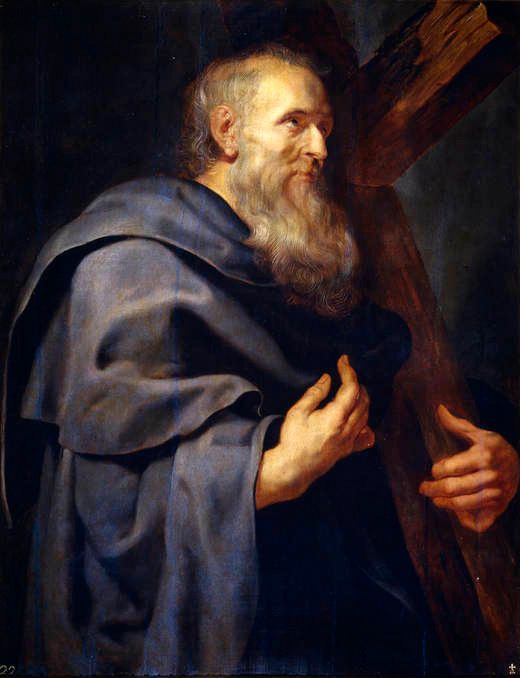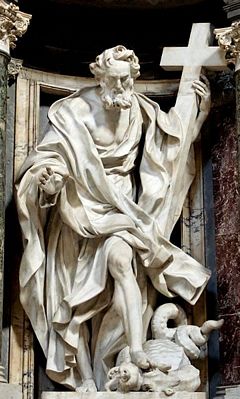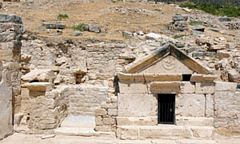
The name of holy apostle Philip derives from Greek, signifying “he who loves horses.” He was a resident of Bethsaida.
It seems this gentle man had a distinct relationship with the Greek-speaking Gentiles in the society. When they wanted to meet Jesus, he was contacted first. Distrustful his own assessment in the matter, Philip turned to Andrew, who took him to tell Jesus of the request.
On the occasion of the miracle of the loaves and fishes to test Philip, Jesus enquired him where they would get enough food to feed 5,000. Philip, thinking in pragmatic terms, answered, “Half a year’s wages wouldn’t buy enough bread for everyone to have a bite.” (John 6:7).
In John 14:8–9, Philip invited Jesus to reveal the Father, obtaining the answer, “Have I been with you so long, and yet you do not know me, Philip? He who has seen me has seen the Father.” In later legends, he was often mistaken with St. Philip the Evangelist (Philip the Deacon), one of the seven deacons of the primitive church (Acts 6:5)
Philip replied Jesus’ call (“Follow me”), and was involved in the call of St. Nathanael (probably St. Bartholomew the Apostle), whom he brought to Jesus.
 Apart from these facts, nothing more is identified about the Apostle.
Apart from these facts, nothing more is identified about the Apostle.
If as a vigorous apostle he lacked confidence, Philip mellowed, becoming an stimulated speaker and healer. After Pentecost, tradition tells that for twenty years he lived and preached in Scythia, and then in Asia Minor at Hierapolis, which in Greek means “Holy City.” His sister Miriam and his four daughters joined him in propagandizing the word of God.
When Philip the apostle went forth from Galilee, a widow was carrying out for burial her only child, who was all she had. Now the apostle was very concerned in his soul when he saw the poor old woman slashing out her hair and mutilating her face. He said to her: “What religion was your son practicing when he died so young?”
 Today Philip’s tomb can be found within the ruins of the Turkish city of Hierapolis. There, a constructive mineral spring of warm sparkling water pours forth from the rocks, establishing an enormous crystal clear falls that cascades over the side of a mountain, a wonder nearly as large as the Niagara. In Biblical times it was a famed spa, visited by the sick from all over the Near and Middle East. Looking out at the remains of this ancient city, it is easy to imagine Philip carrying out his ministry with his family. Undeniably, legend tells that once the tombs of his daughters, all prophetesses and well-known in the church during the first and early second centuries, could be discovered in Hierapolis as well. In Hierapolis two alphabetic oracles have been found, one, very fragmented, built into the Martyrium of Philip, the other, preserved almost complete, on a former statue pedestal that was reused in the foundation of the temple of Apollo.
Today Philip’s tomb can be found within the ruins of the Turkish city of Hierapolis. There, a constructive mineral spring of warm sparkling water pours forth from the rocks, establishing an enormous crystal clear falls that cascades over the side of a mountain, a wonder nearly as large as the Niagara. In Biblical times it was a famed spa, visited by the sick from all over the Near and Middle East. Looking out at the remains of this ancient city, it is easy to imagine Philip carrying out his ministry with his family. Undeniably, legend tells that once the tombs of his daughters, all prophetesses and well-known in the church during the first and early second centuries, could be discovered in Hierapolis as well. In Hierapolis two alphabetic oracles have been found, one, very fragmented, built into the Martyrium of Philip, the other, preserved almost complete, on a former statue pedestal that was reused in the foundation of the temple of Apollo.
- In medieval art Philip’s symbol when not loaves of bread is a tall cross.
- Holy days: in the East, November 14; in the West, May 1. May 1 is jointly with James the Younger; later transferred by the Roman Catholic church to May 3. The feast of the Apostle St. Philip, together with that of St. James the Less, was celebrated in the West on May 1 until 1955, when it was transferred to May 11; the Greeks celebrate it on May 14.